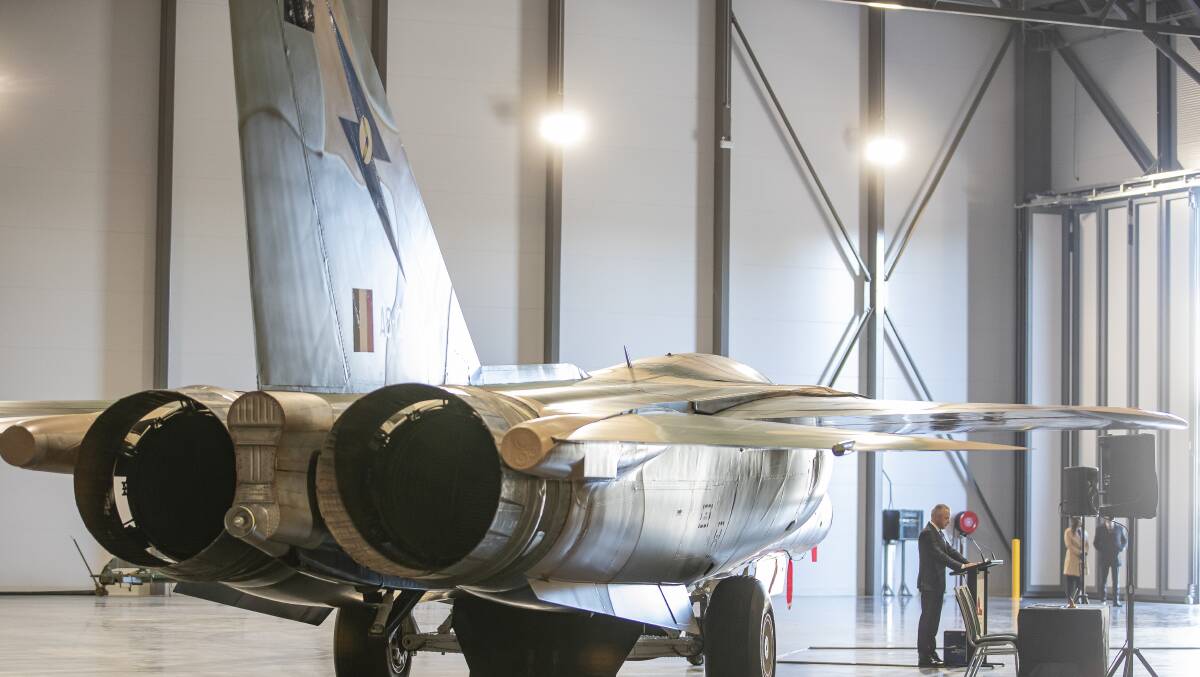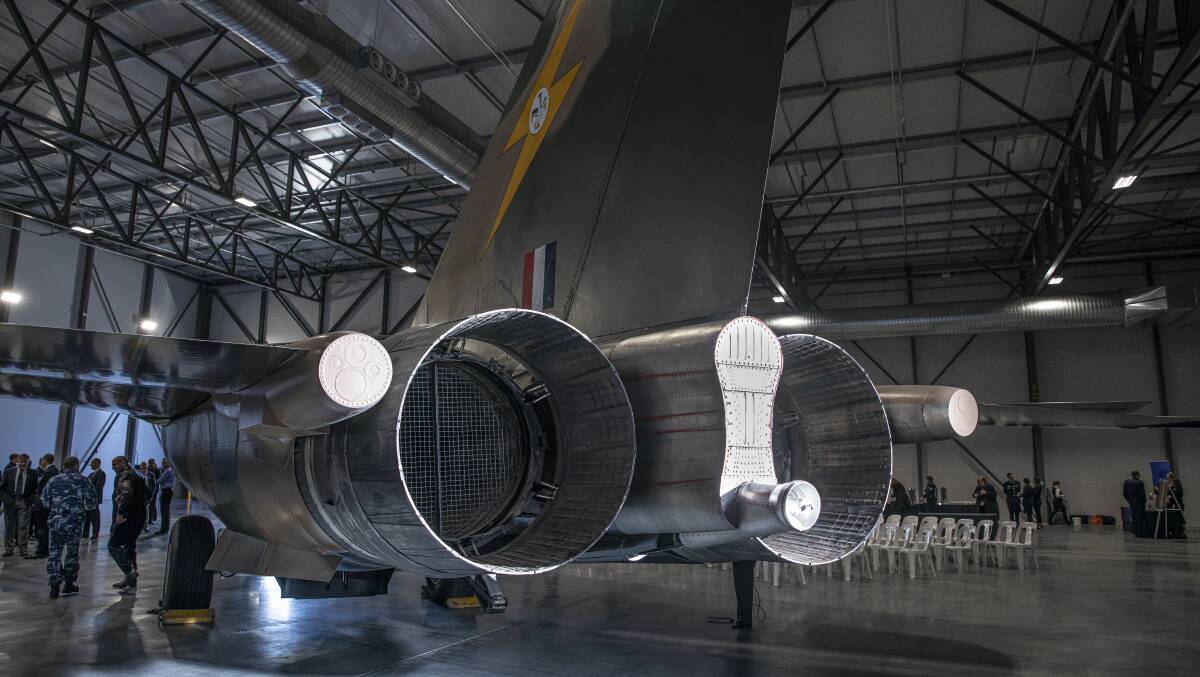The Australian War Memorial says there is no risk to staff or to the public, despite its newly acquired fighter intended for public display containing asbestos.
Subscribe now for unlimited access.
or signup to continue reading
The RF-111C fighter jet was added to the memorial's collection last month at its storage facility in Mitchell, which will open to the public from next year.

However, a federal auditor-general's report from 2015 identified the F-111 aircrafts each had hundreds of bonded panels containing asbestos.
The report said asbestos was used in adhesive throughout the fighter jets in bonded panels as well as flight control surfaces.
"It is not practical to remove all asbestos from an F-111 and certify the aircraft as asbestos free," the auditor-general report said.
"This is due to potential presence of asbestos-containing adhesive within all bonded panels and primary structure of the aircraft.
"An F-111 aircraft can only practicably be preserved on the basis that it still contains in situ asbestos."
The fighter jet will remain in the Mitchell storage facility until the memorial's $500 million expansion, with memorial director Brendan Nelson saying the aircraft would have pride of place.
"There'll be a new atrium connecting the new Anzac Hall to the existing memorial, and this aircraft will be there under that atrium," Dr Nelson said at the unveiling.

In a statement, a memorial spokeswoman said while the F-111 fighter jet going on display contained asbestos, there wasn't a need for concern.
"We have comprehensive documentation of the remaining encapsulated asbestos in the F-111 and manage it in accordance with workplace health and safety regulations," the spokeswoman said.
"We do not intend to allow access to the interior of the aircraft."
The F-111 fighter jets entered service in the Royal Australian Air Force in 1973, with a fleet of 24.
Four of those aircrafts were converted into the RF-111C aircrafts, used for reconnaissance missions, which was the type of jet acquired by the memorial.
The jets were withdrawn from service in 2010, with the Department of Defence then estimating it would cost $2.5 million to remove asbestos from just one jet.
However, the plan was scrapped once the extent of the asbestos was known in the F-111 jets.
"The large number of bonded panels and primary non-removable structure that may contain asbestos, the semi-destructive nature of any testing regime, and the significant effort to manufacture replacement panels make it an utterly impracticable undertaking within currently available defence and defence industry capability and capacity," the report said.
The report also noted the Defence Department at the time of the de-commissioning of the F-111 jets told the federal government there may be public concern over placing the jets on display to the public.
The Department of Defence said it preferred for the aircraft to not be displayed in external museums.
However, a plan was developed between the department and the federal government to have the Commonwealth pay for demilitirisation and preparation if the jet was loaned to a non-defence museum.
An announcement was made in 2011 that seven of the F-111 jets would be made available to aircraft museums and other historical organisations.
The war memorial spokeswoman said protocols were in place to manage asbestos inside the F-111 jet.
"We manage asbestos in the collection as we become aware of it, also in accordance with workplace health and safety regulations," the spokeswoman said.
"We remove, encapsulate and treat asbestos in consultation with accredited asbestos assessors and removers."


